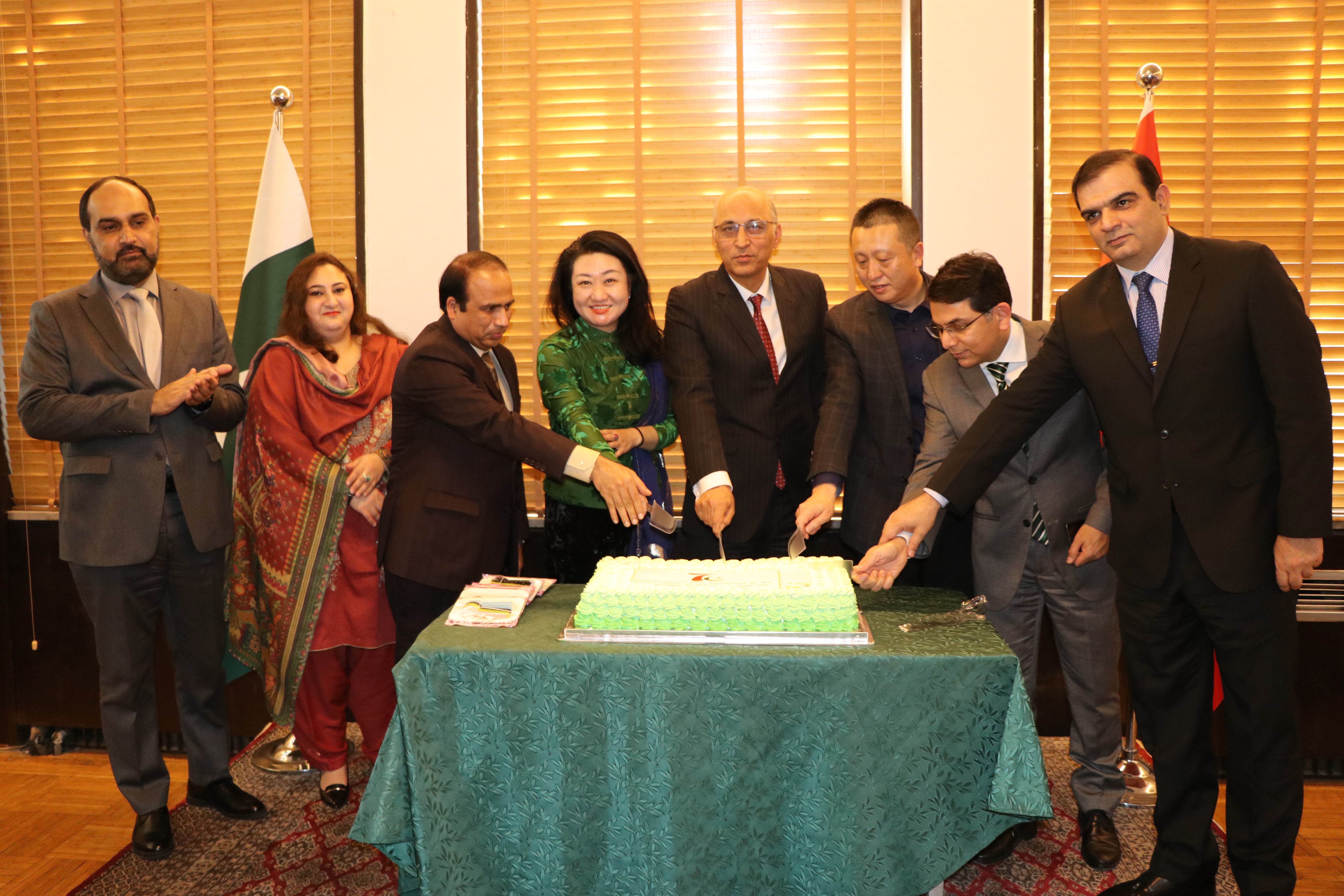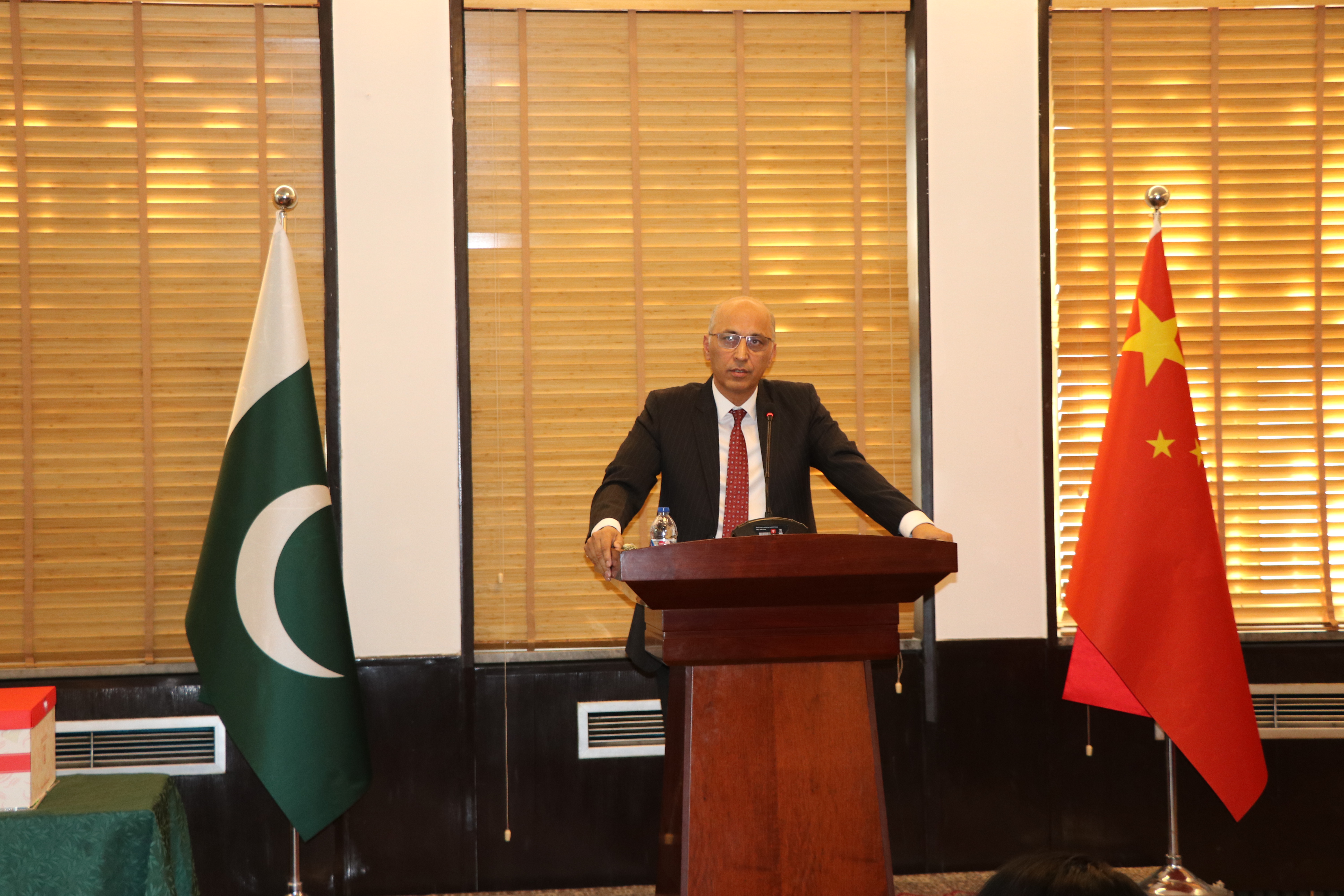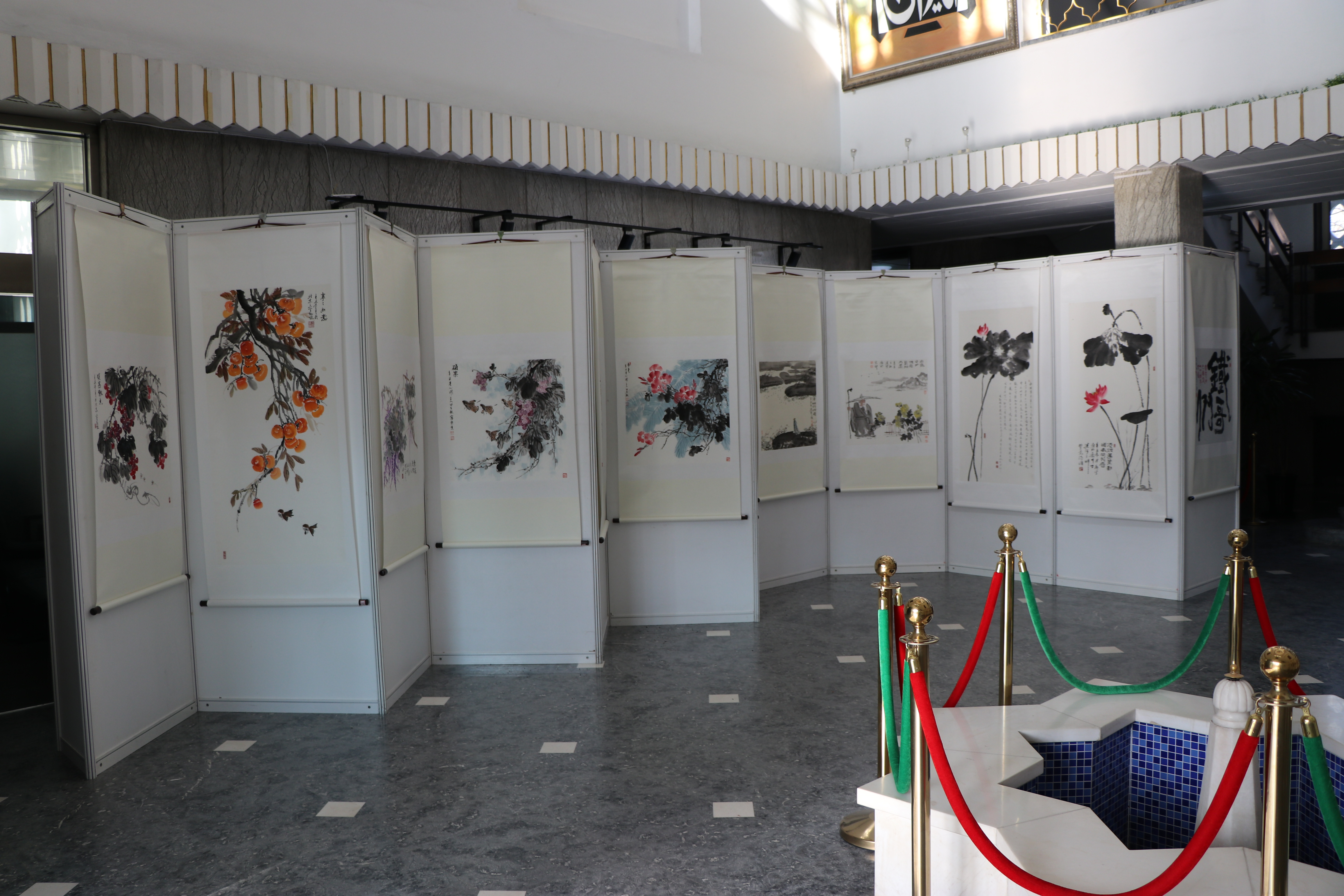
The China-Pakistan Traditional Arts Exhibition was held at the Pakistani Embassy in Beijing on Dec. 21 to celebrate the 70th anniversary of diplomatic relations between the two countries.

Co-organized by the Pakistani Embassy in Beijing and Feng Jing Man Yuan Painting and Calligraphy Gallery, the exhibition displayed more than 30 paintings created by celebrated Chinese painters.

The event opened with attendees' singing the national anthems of China and Pakistan. Then the Pakistani Ambassador to China Moin ul Haque noted that the various elements in the paintings, such as China's natural landscape, symbolize closeness and purity of the bilateral friendship, and represent the harmony between the two peoples.
He hoped that the two countries could build a cultural corridor to advance people-to-people exchanges based on the China-Pakistan Economic Corridor, a flagship project of the Belt and Road Initiative (BRI).
Among the paintings, two larger-sized pieces, "New Chapter of the Ancient Rhyme" and "The Pine and Crane Portrait," were highlighted and unveiled by Ambassador Haque and Gallery head Wang Guangyu.
Calligrapher and painter Zhang Dimao, a co-creator of the "New Chapter of the Ancient Rhyme," explained that the snow mountains in his creation signify the true and pure bilateral relations, and the thriving deodars stand for the long-lasting friendship. In addition, the camel caravans at the foot of the mountains are tokens of trade interactions that date back to the ancient Silk Road and further progress under the BRI.
The piece "The Pine and Crane Portrait," produced by Tan Shule, an art professor with Beijing University of Civil Engineering and Architecture, features pines, cranes, bamboos, and plum blossoms. According to Tan, the plants on his painting can live through low temperatures and other harsh natural conditions, reminding people of the everlasting friendship between China and Pakistan that withstands the test of time.

The rest of the paintings displayed some elements unique to Chinese culture, including peony, lotus, and wisteria, and China's natural scenery and pandas to express best wishes for the bilateral ties. For example, the plump and translucent grape bunches indicate the fruitful achievements secured in China-Pakistan cooperation.
At the end of the event, the Ambassador presented certificates of appreciation to the painters present for their contributions to the exhibition.